Star Trek Ascendancy
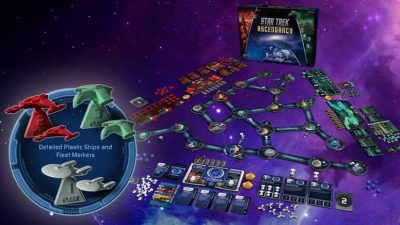
What is Ascendancy
My initial impression of Star Trek Ascendancy was a Stark Trek twist on Axis and Allies. That could not be further from the truth. While you fight battles with little plastic pieces, conquer and hold territory, forge/break alliances; there the similarities come to a screeching halt. Star Trek Ascendancy’s innovative yet simple engine more closely resembles a conventional PC space RTS games such as Galactic Civilizations and Sins of a Solar Empire, that will quench your thirst for interstellar conquest and intrigue.
How to Play
The secret sauce, is the highly randomized play area. True to the spirit of what made Star Trek famous, the heart of the game is exploration. You start off with a fully developed home-world and a respectable fleet of three ships. You must then expand your territory and discovery new worlds in order to build up your infrastructure. As you colonize new worlds, you can build resource nodes (depending on the planet) that grant you more resources each turn.
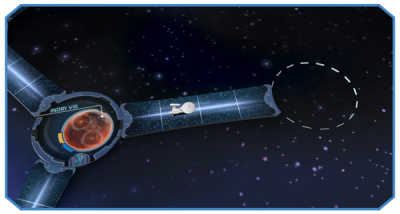
Planets are discovered by rolling a unique D6 to determine what length of a space lane you lay down. Space lanes connect your planets and facilitate travel across your domain. Short, 2-space, space lanes are the most desirable early on in the game.
Once you discover a new planet, you draw a discovery card. Only the first couple of planets at the start of the game are (almost) guaranteed not to destroy your exploring ships. Later on, you may draw randomized phenomena or crisis card that cripples your fleet and hampers your expansion.
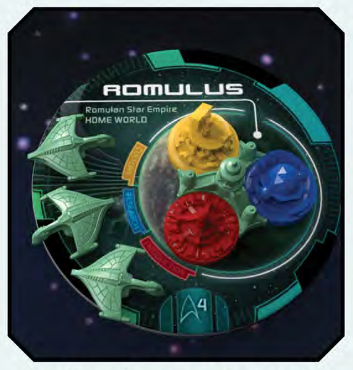 The currency of the game are resources in the form of production, research, and culture. Production allows you to build more ships and nodes, research unlocks new technologies and upgrades, and culture enables you to colonize, absorb other cultures, and progress your faction to reach ascendancy (more on that in “How to Win”).
The currency of the game are resources in the form of production, research, and culture. Production allows you to build more ships and nodes, research unlocks new technologies and upgrades, and culture enables you to colonize, absorb other cultures, and progress your faction to reach ascendancy (more on that in “How to Win”).
When you make first contact with another faction, you can choose whether to declare war, remain neutral, negotiate a trade agreement, or even forge an outright alliance (navigation access to each other’s territory). Trade agreements generate additional production for each faction but are discarded if at war with that particular faction.
How to Win
“It is possible to commit no mistakes and still lose. That is not weakness, that is life.” – Jean-Luc Picard
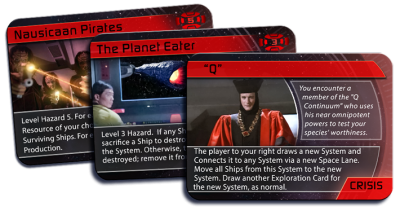
It is entirely possible, through a series of unfortunate events; such as a crisis encountered, dangerous phenomena
Supremacy: Control your own homeworld at least 2 adversary homeworlds
Ascendancy: Attain Ascendancy Level 5 (25 culture points)
Faction Play-Styles
Each faction has a unique play-style, including a special strength and weakness. Here’s a brief snapshot of each of four factions (there are currently six factions available, with more to be released).
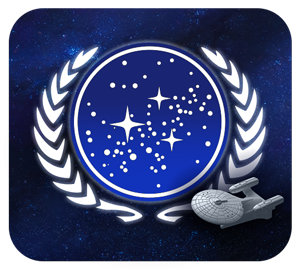 The Federation are first and foremost explorers. While they cannot build very large fleets, they gain extra culture points by exploring discovering phenomena and populated worlds. However, due to their Prime Directive, they cannot invade, nor assimilate pre-warp civilizations. Also, the Federation has a special fleet that can draw two random planets, choosing one and discarding the other to the bottom of the deck… this is often frustrating to the other players which effective exhausts the early “safe” planets to discover.
The Federation are first and foremost explorers. While they cannot build very large fleets, they gain extra culture points by exploring discovering phenomena and populated worlds. However, due to their Prime Directive, they cannot invade, nor assimilate pre-warp civilizations. Also, the Federation has a special fleet that can draw two random planets, choosing one and discarding the other to the bottom of the deck… this is often frustrating to the other players which effective exhausts the early “safe” planets to discover.
Tip: Explore, explore as the Federation, and then bully other civilizations into trade agreements with you after your aggressive expansion. Upgrade shields early to deter aggression.
“It is curious how often you humans manage to obtain that which you do not want.” – Spock
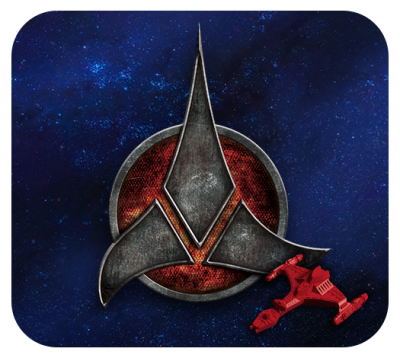 The Klingons are simple and straightforward; war, war, and more war. They excel at conquering other civilizations and can build the largest fleets in the game. They gain a culture point for every three enemy ships they destroy. They require a high amount of production to feed their war machine but do not forget to invest research into weapons and shields, otherwise, your fierce warriors will face certain death as Klingon fleets cannot retreat.
The Klingons are simple and straightforward; war, war, and more war. They excel at conquering other civilizations and can build the largest fleets in the game. They gain a culture point for every three enemy ships they destroy. They require a high amount of production to feed their war machine but do not forget to invest research into weapons and shields, otherwise, your fierce warriors will face certain death as Klingon fleets cannot retreat.
Tip: Conquer as much territory you can early, then start upgrading weapons and shields to vanquish more advanced foes.
“Four thousand throats may be cut in one night by a running man.” – Klingon Proverb
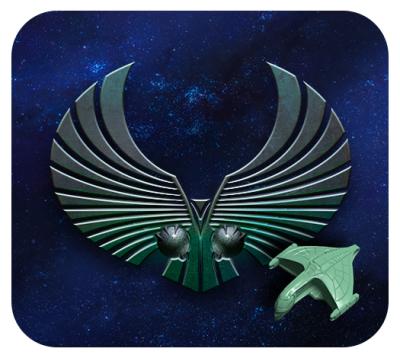 The Romulans are my personal favorite. They are well balanced and gain additional culture points through researching new tech. They prefer to fortify their territory and launch surgical strikes against key targets. Their cloaking devices give their ships first strike which can often obliterate an enemy fleet before it can counter. If left alone too long, their defenses can prove very difficult to overcome.
The Romulans are my personal favorite. They are well balanced and gain additional culture points through researching new tech. They prefer to fortify their territory and launch surgical strikes against key targets. Their cloaking devices give their ships first strike which can often obliterate an enemy fleet before it can counter. If left alone too long, their defenses can prove very difficult to overcome.
Tip: Turtle hardcore by intentionally avoiding first contact, create choke-point style entrances to your territory, and invest heavily in research.
“Misdirection is the key to survival, never attack what your enemy defends, never behave as your enemy expects, and never reveal your true strength, if knowledge is power then to be unknown is to be unconquerable.” -Romulan Proverb
 From one of the Ascendancy expansions, the Ferengi are super traders. They have special trade agreements that grant production for every Ferengi ship in a faction’s territory. both the Ferengi, and the trading faction gain this high influx of production points, so trade can be very lucrative. Beware, while the Ferengi generate virtually no culture points, if left alone too long they can quickly accrue ridiculous amounts of production and buy one culture for every 10 production.
From one of the Ascendancy expansions, the Ferengi are super traders. They have special trade agreements that grant production for every Ferengi ship in a faction’s territory. both the Ferengi, and the trading faction gain this high influx of production points, so trade can be very lucrative. Beware, while the Ferengi generate virtually no culture points, if left alone too long they can quickly accrue ridiculous amounts of production and buy one culture for every 10 production.
Tip: Make trade agreements with at least one or two other factions, upgrade shields and avoid any aggression. Stockpile your production and wait to buy your Ascendancy levels until the last minute, avoiding attention from other factions until it’s too late for them to stop you.
“A contract is a contract is a contract… but only between Ferengi.” – Ferengi Rules of Acquisition
What if I am not really a “Trekkie?”
Ascendancy is very user-friendly, there is virtually no “lore-knowledge” barrier. While there is plenty of lore and references buried in the card decks, as well as familiar planets, whether you’ve seen only a few Trek movies/episodes, all, or even none; the game is a blast for anyone. I played a test game with my girlfriend (who deemed Star Trek as boring) and she was instantly hooked conquering and enslaving worlds as the Klingons
Summary
The game averages an hour for each player, so a 4-player game can average 4-5 hours depending on experience level. However, the rulebook contains several optional rules/conditions that can speed up or change the game-play. The basic game only has 3 races, which is also the minimum number of players. It’s highly recommended to go pick up one of the race expansions as a 4 player game seems to be the most balanced. Be sure to check out for additional information, and news of upcoming expansions!

I have been thinking about this game for a long time. Nice review! Can we get more details?
Thanks! I’m working on a followup with the Borg Expansion and more advanced game points. Anything specific you are interested to know more about?
Faction technology. It looks like they are very faction specific. Are they or do they do the same thing but with faction specific sounding names?
Great question! I may have to do more indepth profiles. Tech is very faction specific for each race. Some are fairly basic, but there are some particular gems that can really upset the playing field.
I agree with the review. It is one of the best three-player games I have played and I highly recommend it for that reason. The end-game has been short / compressed every time we played, however. Things escalate… quickly.
More thoughts on my blog:
http://mezmaronslair.blogspot.com/2017/07/star-trek-ascendancy.html